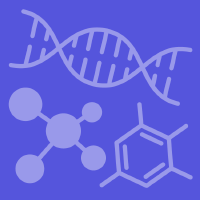Topic Menu
► Topic MenuTopic Editors


2. Centre for Mechanical Engineering, Materials and Processes (CEMMPRE), Advanced Production and Intelligent Systems (ARISE), Department of Life Sciences, University of Coimbra, Calçada Martim de Freitas, 3000-456 Coimbra, Portugal

Microbial Biotechnology Products and Biocatalysis Processes for a Sustainable Bioeconomy

Topic Information
Dear Colleagues,
This Topic on “Microbial Biotechnology Products and Biocatalysis Processes for a Sustainable Bioeconomy” aims to promote the potential of microbial biotechnology products for a sustainable bioeconomy. The discovery of new products has been addressed by multidisciplinary teams, for example, combining knowledge on microbiology, biotechnology, and chemistry. Therefore, this Topic should focus on screenings and characterization of new bio-based products, new microbial producers, and optimization of biotechnological processes by reducing production waste and cost, leading to more sustainable processes and enhancing the circular economy. On the other hand, we are also interested to describe the actual biocatalysts in more detail. In recent years, many new biocatalysts have been described and studied mostly from a biocatalytic perspective. Since more and more (meta)genome data become available, even more of those studies will appear and add to our knowledge on novel reactions and enzymes. However, the transfer to application needs more attention and, thus, scale-up. Enzyme production and optimization in combination with product isolation also need more attention. Thus, this Topic aims to focus also on this chain, including the identification of novel enzymes from bioprospecting activities, producing enzymes and increasing yields from various host organisms, engineering biocatalysts by means of site-directed mutagenesis or directed evolution, putting enzymes together—even with chemical synthesis—yielding novel chemoenzymatic cascades, product isolation after processing or in situ, and even combinatorial approaches towards new products. All this needs research in the field of biocatalysis and biotransformation to bring us to new frontiers.
This issue will focus on the following areas:
- Circular economy by finding new products, new biodegradable microbial polymers, new processes that can create value-added products from wastes or from other secondary metabolites, and by reducing the cost of the production;
- Sustainable agriculture through microbial products such as biopesticides and biofertilizers with low impact to human health and which potentiate the sustainability;
- Environmental remediation using microbes or their products as effective tools to reduce environmental contaminants;
- Emerging technologies through a combination of multi-omics potentiating and accelerating the discovery of new microbial products;
- Bioprospecting towards new enzymes and cell-factories including their detailed characterization; and
- Engineering enzymes or even cellular systems towards a more applied routine in view of sustainability and to contribute to circular economy.
Prof. Dr. Dirk Tischler
Dr. Diogo Neves Proença
Dr. Paula Maria Vasconcelos Morais
Topic Editors
Keywords
- bioprospecting
- chemoenzymatic cascades
- enzyme engineering
- product isolation
- combinatorial screening
- circular economy
- sustainability
- raw materials
- bioeconomy
- pest management
Participating Journals
| Journal Name | Impact Factor | CiteScore | Launched Year | First Decision (median) | APC |
|---|---|---|---|---|---|

Applied Sciences
|
2.5 | 5.5 | 2011 | 19.8 Days | CHF 2400 |

BioTech
|
3.1 | 4.8 | 2012 | 22.3 Days | CHF 1600 |

Catalysts
|
4.0 | 7.6 | 2011 | 16.6 Days | CHF 2200 |

Processes
|
2.8 | 5.5 | 2013 | 16 Days | CHF 2400 |

Preprints.org is a multidisciplinary platform offering a preprint service designed to facilitate the early sharing of your research. It supports and empowers your research journey from the very beginning.
MDPI Topics is collaborating with Preprints.org and has established a direct connection between MDPI journals and the platform. Authors are encouraged to take advantage of this opportunity by posting their preprints at Preprints.org prior to publication:
- Share your research immediately: disseminate your ideas prior to publication and establish priority for your work.
- Safeguard your intellectual contribution: Protect your ideas with a time-stamped preprint that serves as proof of your research timeline.
- Boost visibility and impact: Increase the reach and influence of your research by making it accessible to a global audience.
- Gain early feedback: Receive valuable input and insights from peers before submitting to a journal.
- Ensure broad indexing: Web of Science (Preprint Citation Index), Google Scholar, Crossref, SHARE, PrePubMed, Scilit and Europe PMC.

